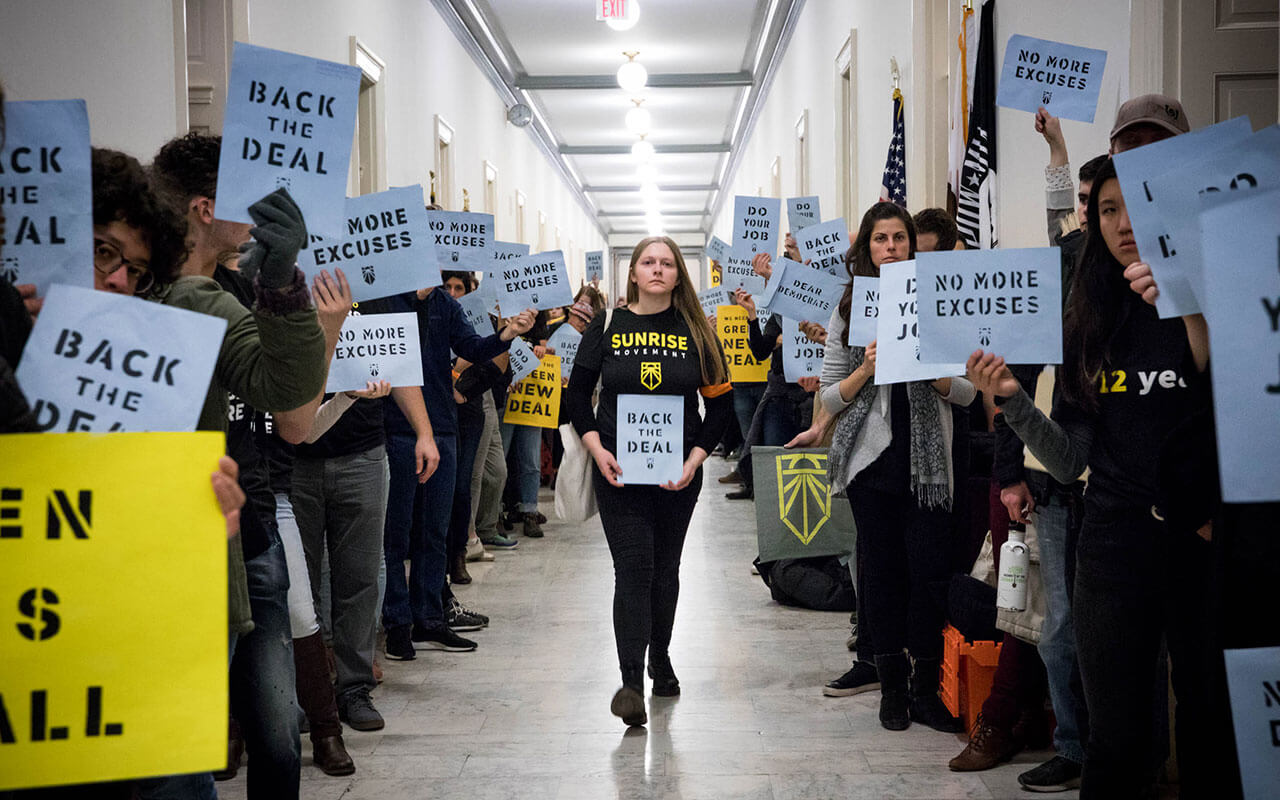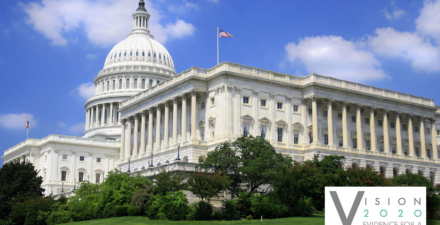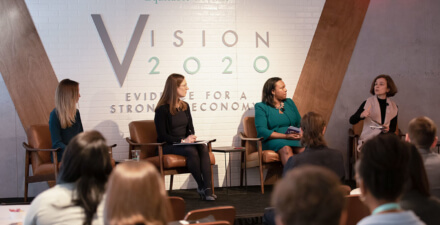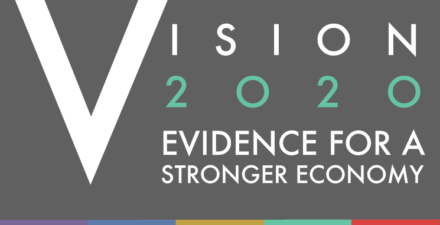Lessons from the New Deal of the 1930s for a Green New Deal today

This post was adapted from remarks delivered at Vision 2020: Evidence for a Stronger Economy, the Washington Center for Equitable Growth’s policy conference, which was held November 1, 2019.
Climate change activists in the United States and around the world can take heart from recent polls that show a majority of Americans in both major political parties and all ages support interventions to reduce greenhouse gases and encourage renewable energy. Ferocious hurricanes, extensive flooding, and destructive fires certainly help underscore the dire situation for the public.
Yet the scale of action and the agenda for change that many Americans endorse is nowhere near as ambitious as what the authors of a proposed array of policies, collectively known as a Green New Deal, are calling for. Their proposals, although in flux, generally call for a total shift to renewable energy within 10 years, as well as the creation of a transformative green economy that will provide decent jobs with benefits, universal healthcare, and more affordable housing and infrastructure investments.
A Green New Deal, in short, is conceived as the opening wedge in a radical shift from a private, market-based neoliberal economy to a more social democratic one, where new federal policies will create a more egalitarian, just, and greener United States. Advocates for this revolutionary change have seized the mantle of the New Deal of the 1930s and 1940s as their inspiration—and for good reason. President Franklin Roosevelt’s New Deal—designed to address the crisis of the Great Depression—remains the gold standard for the federal government taking responsibility in a national emergency, despite all the backtracking since the 1970s.
My research into how ordinary workers in Chicago responded to FDR’s New Deal provides insights into how popular support for a massive set of new federal programs might be mobilized for a change of this magnitude today. And my recent new book, Saving America’s Cities, tracks how the retreat from empowering the federal government fueled the current crisis in affordable housing and crumbling urban infrastructure. Together, I believe there are four key lessons that Green New Dealers can take from the original New Dealers and the eventual breakdown in support of federal government intervention in the U.S. economy beginning in the 1970s.
But first, it’s important to understand why Americans in the 1930s and 1940s came to embrace the New Deal, as we seek parallels to it today.
How Americans came to support the New Deal
Before the New Deal, many of the workers in the steel mills, packing plants, and other industrial workshops of a city such as Chicago lived political lives defined narrowly by their local ward boss, either a Democrat or a Republican—that is, if, as first- and second-generation Americans, they even voted or participated politically at all. For African Americans, the national Democratic Party was the enemy, the party of their southern oppressors and the party to vote against now that they were in the North.
Moreover, within workplaces, unions, to the extent that they existed in the 1920s, were dominated by elite (usually white and native-born) craft workers, who aimed to limit opportunity for the more numerous, less skilled, and commonly immigrant nonunion workers. After the union organizing defeats of 1919, unions held little promise for lesser-skilled industrial workers. To the extent that working-class Chicagoans could depend for survival on any affiliations beyond their own families, it was on the institutions of their ethnic and racial communities—mutual benefit societies, building and loan associations, churches, and neighborhood “Mom and Pop” stores extending credit.
Workers also looked to the paternalistic welfare programs that their employers had instituted in the 1920s to protect themselves against the failed, but still worrisome, unionization drives that had followed World War I. Companies touted such benefits as paid sick leave and vacation, pensions, and employee representation to foster loyalty in their workers, but their unwillingness to put their money where their promises were gave few workers full access to these benefits.
By 1936, the year of President Roosevelt’s first re-election, the world had turned upside down. Faced with a global Great Depression, ordinary working-class Chicagoans, in a few short years, had become enthusiastic adherents of a national Democratic Party with FDR at the helm, voting in much greater—and Democratic—numbers in national elections. That trend also included African Americans, who increasingly replaced the motto “Stick to Republicans because Lincoln freed you” with “Let Jesus lead you and Roosevelt feed you.”
Workers took full advantage of President Roosevelt’s federally funded New Deal programs, benefiting especially from its relief programs but also becoming the rank and file of a massive drive to unionize industrial workers across many sectors, coordinated by the newly founded Congress of Industrial Organizations, or CIO, whose success was made possible by Congress’ passage of the Wagner Act of 1935, which guaranteed the right of private-sector U.S. workers to organize, engage in collective bargaining, and strike. By 1940, one in three workers in Chicago manufacturing would be a union member, whereas 10 years earlier hardly any had been.
The political landscape of Chicago was transformed. Workers who, not many years before, had ignored or shunned the national Democratic Party, had had few connections to Washington, and had been excluded from national unions now identified with the national government and a nationwide party and union.
Lessons from the New Deal era
Given the challenge today to mobilize ordinary Americans for an ambitious climate policy agenda in the 21st century, what can they learn from the original New Dealers, who successfully recruited supporters to such a paradigm-shifting program more than eight decades ago?
First, President Roosevelt and his advisers never had a master plan for the New Deal of the 1930s. Rather, they promoted and implemented a set of new laws and regulations in FDR’s first 100 days as practical fixes to pressing problems. As time went on, programs that worked remained while others died, to be replaced by new initiatives.
When the National Industrial Recovery Act—with its voluntary codes of fair competition and limited encouragement of collective bargaining—proved inadequate and then was ruled unconstitutional, it was replaced with the stronger Wagner Act that offered a clearer path to unionization. And it was not until the so-called Second New Deal beginning in 1935 that a welfare state of Social Security, minimum wages and hours, Unemployment Insurance, and public housing would take shape.
In other words, the New Deal was improvisational and incremental. Furthermore, to minimize the impact of the shift away from state-based federalism to more national management of the polity, many federal programs were operated and dollars were channeled, through states, counties, and cities—injecting federal resources and regulations without marginalizing all existing local sources of political power.
The result was a hybrid governance structure of national statism and persistent localism. President Roosevelt pledged to create “a new deal for the American people,” but he also insisted that he was rescuing capitalism, not overthrowing it. And he never laid out a fully developed blueprint for action. For ordinary Americans, embracing the New Deal did not require signing on to a totally new, radical platform.
Second, this New Deal of the 1930s was more practical than ideological, tolerating constraints imposed by its coalition partners. Most tragically, powerful southern Democrats insisted on excluding agricultural and domestic workers, many of whom were black and Mexican, from the protections of the Fair Labor Standards Act, and rejected much-needed anti-lynching legislation.
But there were also crucial partners on the left. Ideologically motivated, radical activists pushed the New Deal to make deep, structural changes in the U.S. economy and society, orchestrating Communist Unemployed Councils, Socialist Workers’ Committees for Unemployment, hunger marches, and left-wing unions. In the end, despite all the hardships of the Great Depression, the average worker did not buy into an anti-capitalist message. Communist organizer Steve Nelson recalled how he and his comrades had “spent the first few weeks agitating against capitalism,” but then quickly learned to shift to a “grievance approach,” raising “demands for immediate federal assistance to the unemployed, and a moratorium on mortgages.”
In fact, partly inspired by the failed promises of their employers’ welfare capitalism schemes of the 1920s, working-class Americans came to embrace what I have labeled “moral capitalism.” While benefiting from radical leaders, they more often opted for liberal goals, to be achieved by pressuring employers and national leaders to deliver a fairer, more just capitalism, but not to refashion the existing economic order.
But rather than lead the Green New Dealers of today to conclude they must accept the inherent conservatism of ordinary Americans in their agenda setting, this experience of the 1930s should remind us that a radical flank played a crucial role in achieving even a liberal outcome. Left leaders of the CIO worked hard to cultivate what I call an inclusive “culture of unity” in the union movement. They knew that success required it, or else the ethnic and racial divisions that had doomed the 1919 organizing drives would re-emerge. If they did not brazenly call for class solidarity, then white working people might well retreat to their segmented ethnic worlds and express open hostility to African American co-workers.
Applying these lessons to climate policy today
One broad lesson, then, from the New Deal of the 1930s is the necessity of having both a radical flank of idealists to inspire action and a willingness to accept a more gradualist and moderate path to change.
The history of the Roosevelt New Deal, however, offers up three more specific lessons for building support for a Green New Deal. First is the importance of leadership, both at the top and the bottom. Workers admiringly championed President Roosevelt. And committed local leaders, both in the Democratic Party and on the shop floor, effectively managed to bring a national agenda of change back home.
Second, working people were mobilized within existing and new institutions and organizations, not as isolated individuals. Even as churches, ethnic organizations, and the like failed to meet the crisis of the Great Depression on their own, they provided entryways to new solutions. This is perhaps one of the greatest challenges facing progressive policymakers today. Even as people’s social media affiliations have grown, many intermediary institutions—particularly unions, but also churches, clubs, and other centers of social capital—have weakened or even disappeared. The success of the political right might, in fact, be attributed to the greater survival of organizations such as evangelical churches, which provide infrastructure as well as inspiration for conservative politics.
Third, the New Deal of the 1930s was most remarkable for how it inspired a generation of Americans to trust the federal government as capable of solving many of the nation’s—and their own personal—problems. That confidence would persist during at least three more post-war decades. Today, however, we are in a very different place. Trust in the federal government has eroded. And as distrust has grown, responsibility has devolved to lower levels of government and has fed the anger and disillusionment that is so visible today. Global warming is not a problem that can be solved easily at lower levels. National—even international—remedies are needed to address climate change and a host of other challenges.
In my recent book, Saving America’s Cities, I analyze how this rejection of the federal government also fueled today’s lack of affordable housing and disinvestment in urban infrastructure. Mounting a Green New Deal—or solving the nation’s housing crisis—will require reawakening people’s confidence in the vision and effectiveness of Washington. The Green New Deal carries the potential of helping to inspire that greater confidence—or of being dismissed by a still-skeptical public as one more federal folly. How shrewdly progressives play that hand may ultimately determine their success.
—Lizabeth Cohen is the Howard Mumford Jones Professor of American Studies and Harvard University Distinguished Service Professor.




